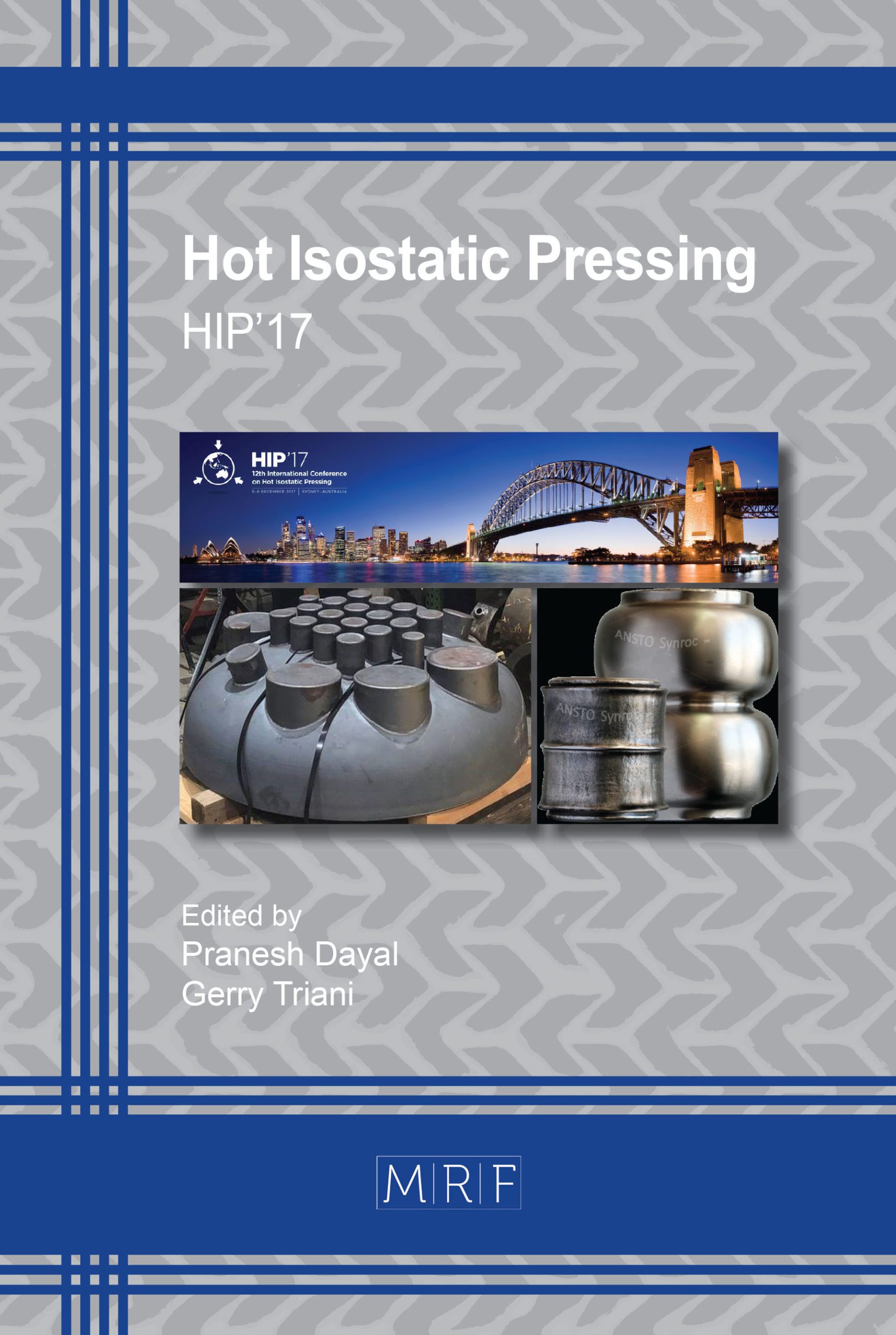Efficient Modeling of PM HIP for Very Large NNS Parts (up to 2.5 Meter Diameter) and Key Physical, Material and Technological Parameters to Control Dimensional Scattering in a 15 mm Range
Gerard Raisson, Vassily Goloveshkin, Anton Ponomarev, Andrey Bochkov, Yuri Kozyrev
download PDFAbstract: To get via PM HIP a 2.5 meter diameter or even larger part in a Near Net Shape (NNS) configuration at the first attempt with a 15 mm max over thickness is a very challenging task. However, its solution will enable production of such parts for various critical applications. To achieve this goal, it is necessary to increase precision of HIP modeling. Our analysis has shown that rather than to work on constitutive equations, it is more efficient to improve the consistency of the data base of rheological properties for the powder and capsule materials and more particularly at the first step of HIP cycle which controls heat conductivity. Also it is necessary to account additional effects of the strain rate hardening for the capsule material and of the initial packing density for the powder. Independently of modeling, it is necessary to control all parameters generating the dimensional scattering (HIP cycle trajectory, temperature homogeneity, filling and handling of capsules). Modeling helps to define what the most critical parameters are and what dimensional tolerances can be respected.
Keywords
HIP Modeling Data Identification, HIP Dilatometer
Published online 2/11/2019, 14 pages
Copyright © 2019 by the author(s)
Published under license by Materials Research Forum LLC., Millersville PA, USA
Citation: Gerard Raisson, Vassily Goloveshkin, Anton Ponomarev, Andrey Bochkov, Yuri Kozyrev, Efficient Modeling of PM HIP for Very Large NNS Parts (up to 2.5 Meter Diameter) and Key Physical, Material and Technological Parameters to Control Dimensional Scattering in a 15 mm Range, Materials Research Proceedings, Vol. 10, pp 210-223, 2019
DOI: http://dx.doi.org/10.21741/9781644900031-28
The article was published as article 28 of the book Hot Isostatic Pressing
![]() Content from this work may be used under the terms of the Creative Commons Attribution 3.0 licence. Any further distribution of this work must maintain attribution to the author(s) and the title of the work, journal citation and DOI.
Content from this work may be used under the terms of the Creative Commons Attribution 3.0 licence. Any further distribution of this work must maintain attribution to the author(s) and the title of the work, journal citation and DOI.
References
[1] Abouaf, Chenot, Raisson: Finite Elements Simulation of Hot Isostatic Pressing of Metal Powder. J.Numerical Methods in Engineering 25, 191-212, 1988. https://doi.org/10.1002/nme.1620250116
[2] Samarov et al: Application of HIP for Near Net Shape critical parts and components. Hot Isostatic Pressing 1993 L.Delaey and H.Tas (editors) 1994 Elsevier Science B.V. pp 171-185. https://doi.org/10.1016/B978-0-444-89959-0.50022-0
[3] R.J.Green: Int.Mech.Sci., 1972, 14, (4), 215-224. https://doi.org/10.1016/0020-7403(72)90063-X
[4] Sanchez, Ouedraogo, Stutz, Dellis: Integration of a new viscoplastic constitutive equation in a finite element code. Powder Metallurgy World Congress, 98, Vol 2, pp 531-536, Granada, Spain.
[5] P.Viot: Modelisation du comportement viscoplastique des poudres métalliques. Developpement d’un nouveau dispositif experimental de Compression Oedometrique à Chaud. « Modeling of viscoplastic behavior of metallic powder. Development of a new Hot Oedometric Pressing device ». PHD thesis 2000 december 18 Grenoble 1.
[6] Fondere, Federzoni, Raisson: Identification Models of Powder Densification using in-situ HIP Dilatometer. 2004 PM World Congress. Vienna October 2004.
[7] Burlet, Gillia : Model identification for powder densification. HIP 2005 Paris may 2005
[8] C.Argento and D.Bouvard: Modeling the effective thermal conductivity of random packing of spheres through densification. Int. J. Heat Mass Transfer vol.39-7, 1343-1350 (1996)
[9] Goloveshkin, Raisson, Ponomarev, Bochkov: Accounting of non-stationary Temperature Field while modeling of HIP for large size Components. HIP 2011 Kobe April 2011.
[10] Samarov, Raisson, Seliverstov, Goloveshkin: Principles of shape and densification Control during HIP. HIP 2011 Kobe April 2011.
[11] Ashby: The Modelling of Hot Isostatic Pressing. Proceedings of th international Conference on Hot Isostatic Pressing. Lulea, 1987.
[12] Van Nuguyen, Bezold, Broeckmann: Anisotropic Shrinkage of Hot Isostatically Pressed Components. HIP 2014 Stockholm June 2014.
[13] Than-Chi Lu: Structure superficielle des poudres de superalliages base nickel et mécanismes intervenant au cours de la densification. Nickel base Superalloys Surface Structure and involved mechanism during densification” PHD thesis Ecole des Mines de Paris 1987.































